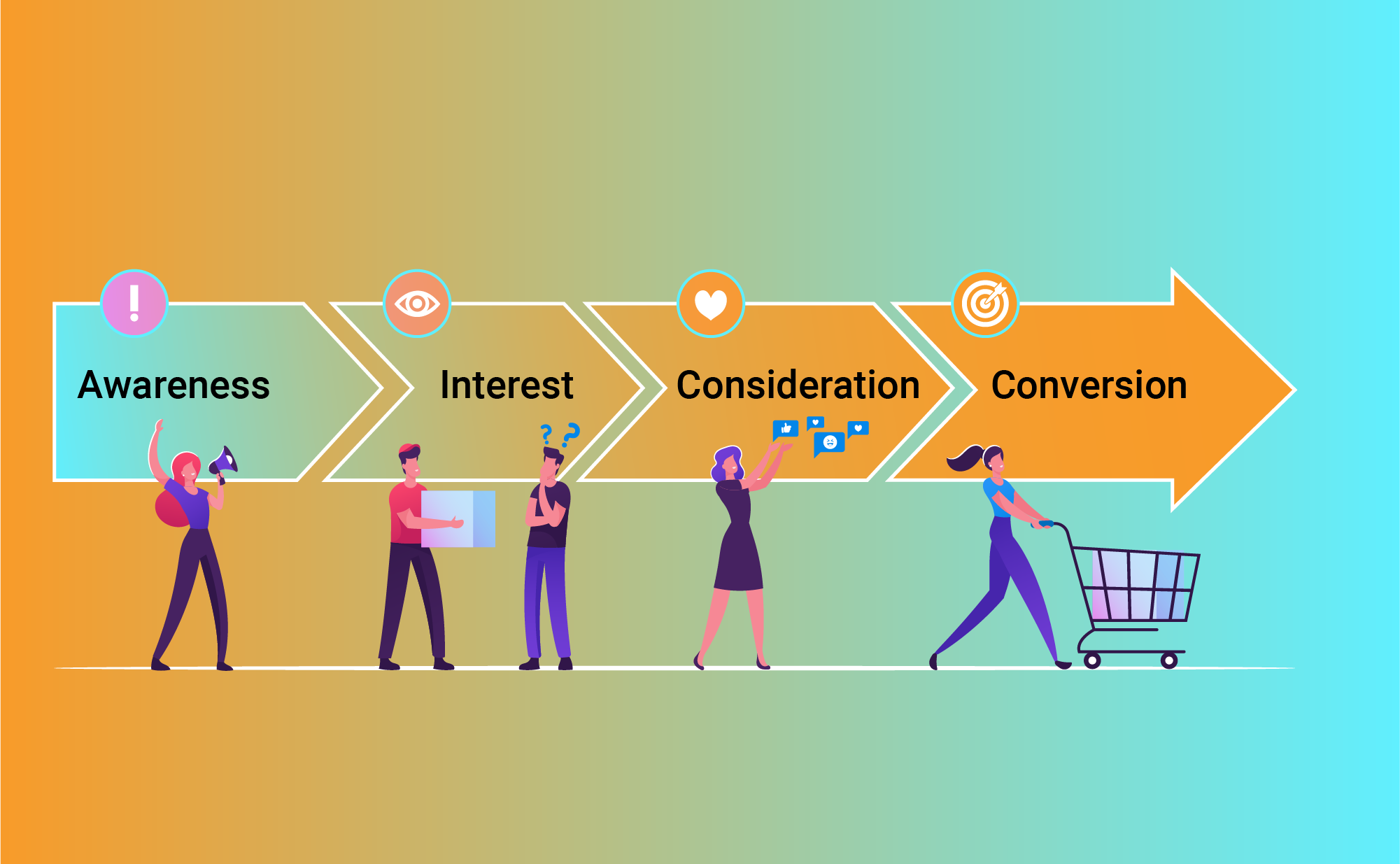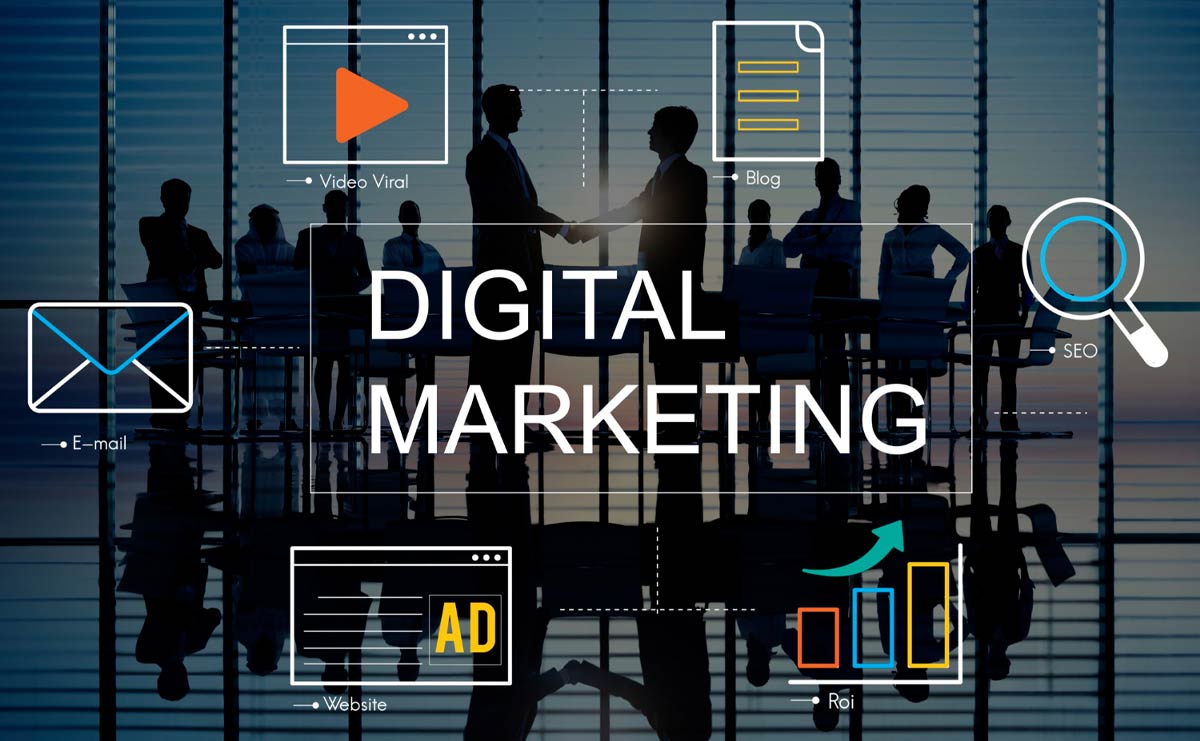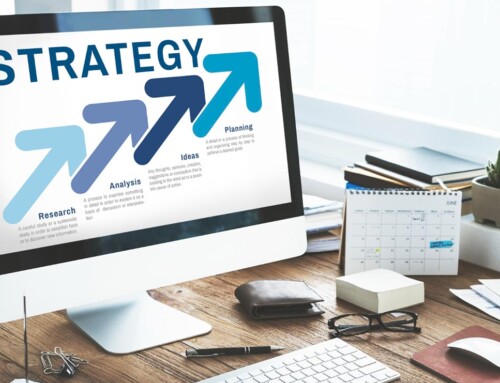Contents
Starting a business is pretty exciting. You swear on your products and services, you plan on advertising and marketing, and boom! You make tons of sales. But in reality, it takes a lot of effort to make a sale. You need to have a marketing funnel to strategize every step in the process of turning your target audience into customers who purchase from you. Digital marketing funnels are the key to successful sales. Knowing what they are and how they work helps you better understand your potential customers and how to attract them.
Marketing funnels are the journey customers go through when they interact with your business. Every opportunity in this funnel counts to increase your brand awareness and build unbreakable trust with customers. In this blog post, I will break down digital marketing funnels and teach you all you need to know to take full advantage of them.
What Is A Marketing Funnel?
A marketing funnel is a strategy to attract your target audience and convert them into customers. This process starts when people hear about you and ends when they purchase your products. It is called a funnel because only about ten become customers from every hundred people who start the process. Every marketing funnel has four main stages:
- Awareness
- Interest
- Consideration
- Conversion
You create your own digital marketing funnel by customizing these steps according to your business, products, and brand identity.
How to Create a Marketing Funnel?
To create your digital marketing funnel, you first have to understand what happens in each step:
Awareness
Awareness is the first stage of a marketing funnel. Your target audience needs your products or services. This stage is when they find out about your brand and products. There are different ways people will hear about you through a digital marketing funnel. Here are some examples:
- They read your articles.
- They listen to a podcast where the host mentions your brand.
- They see one of your ads on Facebook or Instagram.
- They search for a product and find your website.
- They watch one of your videos on Youtube.
No matter what way, people now know about your business. They understand that your products or services solve their needs. This is where your job starts. You have to share awareness about your products, your brand, and how what you offer solves your customers’ problems. In this stage, you have to reach out to as many people as possible. To increase awareness about your brand, you can post ads on social media platforms, learn about SEO, so you get a higher rank on Google searches, write blogs, and use strategies like affiliate and influencer marketing.
Interest
The second stage of a marketing funnel is interest. At this stage, you have your potential customer’s attention. The main goal in this stage is to turn a visitor into a lead. Now that they are on your website, it is important to keep them there. The key factor in this stage is content. Offer them interesting information about your products. Educate them on what is relevant to your brand and products.
Consideration
The consideration stage is where you have to persuade potential customers to purchase from you. Your potential customers know the problem, they know the solution, and they know you can provide the solution. Here is the thing, chances are, they would still not choose you because there are other businesses like you to offer them the solution. They will look at alternatives. They will compare quality and prices. Your job here is to convince them that you are the right business to purchase from.
Research your competitors and find ways to stand out from them. Once you do so, use words like top, best, and vs. in your blog titles to tell your potential customers how you differ from your competitors.
You can also persuade them to do business with you by offering them promotions they cannot simply turn down. These promotions can be coupons for a first purchase, free products with their first sale, or free online courses and downloadable ebooks.
Conversion
The fourth and last stage of a digital marketing funnel is conversion. You might think, okay, so your potential customers decided to purchase from you, what else is there for you to do? It’s a simple question with a simple answer. You have to make sure the purchase experience is short, fast, seamless, and pleasant. People do not have the time and patience for errors, back and forth emails, and complicated payment processes. You have to ensure they can easily purchase from you. You have to make sure your inventory is stocked. Your sales reps have to be thoroughly educated on what your products and services are. You also have to make sure you offer a variety of well-known payment methods that people usually use.
This stage is also a good opportunity for upselling. Upselling is a strategy to sell add-ons to the products your customers are purchasing. For example, when you buy an iPhone, they ask if you want to buy matching AirPods.
Generating exposure for your brand
Digital marketing funnels for beginners help you generate exposure to your brand and engage the audience at different stages of the buying cycle. Understanding these stages will help you develop a strategy that will convert visitors into advocates for your brand. To begin, identify your target audience. A common mistake is to think that everyone is your target audience. While this is true in some cases, you’ll end up wasting time and resources. People move through several stages of the buying cycle, from awareness to interest to desire to action. The action stage is the point when they actually purchase your product.
You’ll find that 40% of people who search for a “headspin beanie” click through to your website. You offer a 20% discount if they give you their email address. However, ten people use the discount coupon and the rest drop out. That’s the way marketing funnels work – the top portion is always larger than the bottom and the numbers start to drop off at each stage.
Depending on your business, you may need to create multiple marketing funnels for your brand. Most business owners will have more than one funnel running at once. This way, they can continually tweak the funnels as needed. You’ll have to learn the nuances of digital marketing funnels to create a successful business model. This way, you’ll be able to focus on growing your business and generating exposure for your brand.
Social media is a great way to get your audience engaged with your brand and product. Facebook ads can be a great tool to reach your audience. A Facebook ad targeting people who have previously interacted with your brand will help you increase their engagement. By making your audience feel that they can trust your brand, they’re more likely to buy from you. The next time you’re thinking about using social media for your business, don’t think about the pitfalls of ignoring your audience.
Monitoring the sources from which people enter your digital marketing funnel
You should monitor the sources from which people enter your digital marketing process. This will help you to understand the success or failure of your efforts. Using this funnel will help you segment your marketing activities, send messages to the right audience, and deliver more qualified leads to your sales team. Monitoring the sources from which people enter your digital marketing process is one way to improve your sales. It also helps you monitor the performance of your various channels to see how well they are working.
By monitoring the sources from which people enter your funnel, you can improve your conversions and expand your marketing campaigns. For example, you can see whether your guest blog post influenced the conversion of your website visitors. You can then increase its quality or expand it to draw more readers. And this method is easy to replicate. The best part of advanced funnel analysis is that it can tell you which sources have the highest conversion rates, so you can replicate them and maximize your sales.
When you start your funnel, you may find that you have a hundred visitors who watch your demo. Of them, 80 complete a survey or take home a flyer, and these people become leads. Now, you can email these leads with more information, ask them questions, and offer them discounts. This turns those leads into prospects and qualified leads. Your funnel will be much wider and deeper once you start targeting them with email campaigns.
Your digital marketing funnel is not complete without monitoring the sources of people entering it. Using Google Analytics is an excellent free tool for tracking conversion goals, and it can also help you pinpoint leaks in the funnel. Fortunately, most marketing automation suites have detailed analytics and a comprehensive funnel analysis that will help you track your customer’s journey. With this information, you can measure the performance of your digital marketing funnel and make the necessary changes to optimize your marketing efforts.
Segmenting based on activity
Segmenting based on activity in a digital marketing funnel for beginners can help you increase conversion by up to 2-3x. For instance, most new signups are met with a “blank slate” experience, a screen with dummy data and tooltips, and an insufficiently high price point. To make this experience more appealing, include interactive walkthroughs and tooltips. You can use tools like Intercom and Appcues for this purpose.
After learning what works best for your audience, refine your marketing campaigns based on the results. If your segmentation strategy works, you can try different messages, images, landing pages, and offers to see which ones convert better. The best part about digital marketing funnel traffic is that it generates results in less time than testing different offers or optimization variants, which may take weeks or months. If you’re still unsure about which method to use, here are a few suggestions to get you started.
If you’re looking to boost conversions and increase revenue, it’s important to optimize your advertising campaigns. Advertising is the most effective way to market a brand. Google receives approximately 75,000 searches every second. To reach them, your company needs to be on Google. Your ads must be visible and appealing enough to attract new visitors. If you don’t use advertising, you’ll be left with a small percentage of potential customers.
You can also segment based on what the audience did or didn’t do. You can do this by considering buying patterns, the types of products they bought, and the places they spent their time. You can even anticipate their future needs, and use that data to better target your marketing efforts. The trick is to know which characteristic is most relevant to each segment. You’ll be amazed at the difference between a good landing page and a great funnel.
Segmenting based on value
To get the most out of your marketing efforts, you must know how to segment your users based on their value. This can be done by determining which characteristic is most useful to a certain group. Before you start building your marketing funnels, make sure you understand your marketing goals. For instance, an eCommerce store funnel is designed to boost product sales. On the other hand, a course funnel is designed to gain subscribers and make a sale later.
The first step in segmenting based on value is to identify the problems your customers face. The middle part of the funnel is where customers are unaware of their problems and are not sure about the solution. On the bottom part of the funnel, customers are ready to buy, and they’ll purchase once they have been educated. Ultimately, you can then market to them and convert them into customers.
As mentioned above, price is an important metric for customers. If you’re selling an annual subscription, you can’t assume your customer has moved from adoption to retention based on usage data. This is only possible with behavioral data. Depending on how often the customer interacts with your product or service, you can segment customers according to their value as a brand advocate. But if you’re starting from scratch, this may be challenging. If you’re not sure where to start, try using behavioral segmentation.
One of the biggest problems most new users face is getting stuck. They might be confused by the product’s user interface (UI) or its pricing plan. You can make things easier by offering valuable resources to them and reducing the risk of them abandoning your funnel. Using a marketing funnel to segment your prospects is a good way to increase conversions and reduce costs. In addition, it will allow you to offer better customer service.
Optimizing your website for conversions
Among the most important elements of an online store, one must constantly test every aspect of the website to increase conversion rates. Conversion rate optimization involves testing every element of a website and digital marketing funnel to improve the conversion rate of website visitors. There are many free articles on the topic that beginners can read to learn more about conversion rate optimization. Below are some tips and techniques to optimize your website for conversions:
First, determine the conversion funnel. If people abandon the funnel at the first step, it is a good indicator that they need to be guided further through the funnel. This is called a bottleneck. Once you know where these users drop off, you can test your funnel to improve its flow. Once you have identified the bottlenecks, you can prioritize your tests based on them. Lastly, make sure that your site is well-designed and easy to navigate.
While optimizing your website for major conversions will boost your bottom line, it is important to remember that only a small portion of your visitors will complete the final step. Even small improvements can have a significant impact on your revenue. This is why it is important to study your audience’s behavior and pinpoint any leaks in the funnel. By identifying these leaks, you can make necessary changes and maximize your bottom line.
In order to optimize your website for conversions, you must understand your customers’ buying habits. The goal is to encourage repeat purchases and retain highly targeted customers. This way, you won’t have to spend money on customer acquisition. Instead, you can generate revenue by using the existing customers you already have. A well-designed funnel can generate repeat business for you. So, if you’re an eCommerce beginner, optimizing your website for conversions is a must!
What to Do After the Digital Marketing Funnel
You may think that your work is done when a purchase is made. But selling once to a customer is not the end of opportunities and the only goal of a marketing funnel. Building a relationship with your customers is an important aspect of your business.
A customer’s journey doesn’t end after making a purchase. They will have questions, and they will have topics to discuss with you about the product. Basically, they need customer service. This stage is where you connect with your customers. Even if they do not have any questions, it is always a good idea to follow up on them. You have to maintain a relationship with your customers so they understand how valuable they are to you and your business. The more you stay in touch with your customers, the higher the chance of them becoming advocates.
Your customers will talk about you. They will talk about their pleasant shopping experience with your brand, which will encourage their friends and family with the same needs to shop from you too.
There are different ways to follow up on customers after purchasing from you. One way is email marketing. Email marketing strategies with a strong CTA are a great way to keep the communication between your business and customers going. Email marketing campaigns can promote a new product, offer discounts and promotions, or encourage people to sign up for your newsletter.
You have to ensure customers come back for your products. Basically, you have to sell products to old and new customers. You can do this by creating a loyalty program. Customers will earn rewards each time they make a purchase, and they can redeem these rewards for free gifts, coupons, and discounts. This will encourage them to buy more products and services from you.
To Wrap Up
Marketing funnels can totally elevate the reach, impact, and revenue of a business. No matter how long you have been in business, having digital marketing funnels allows you to reach out to different target audiences and have the opportunity to increase sales and brand awareness. Marketing funnels are the experience customers have with you from the very first time they hear about you until they choose to shop from you. Get to know your audience well and offer the products they need so you can create a marketing funnel that would guarantee the highest ROI from the pool of people who come across your business.
Disclaimer: The content provided on this blog is for informational purposes only and does not constitute legal, financial, or professional advice.







